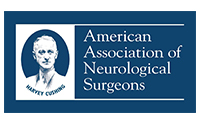What is Focal Dystonia?
Dystonia defines a group of movement disorders characterized by slow repetitive involuntary muscle spasms and contractions. Focal dystonia is a type of dystonia in which the movement disorder is localized to one part of the body. Focal dystonia may affect the eyelids(rapid blinking or closure), neck(contractions cause the head to twist or pull to one side), vocal cords(spasm affect voice) and arms(writer’s cramp). The two most common areas affected are the eyelids and the neck. Task-specific dystonias, such as writer’s cramp and musician’s cramp, show uncontrolled movements of the hands only during the specific task (while writing or playing an instrument) and not during other activities.
Causes of Focal Dystonia
Focal dystonia may be primary, caused by an abnormality in a part of the brain called the basal ganglia which are responsible for controlling movement, or maybe secondary, associated with other conditions such as multiple sclerosis and Parkinson’s disease. Most cases of focal dystonia can be identified by physical examination alone; however, your doctor may order blood tests, urine tests or imaging scans to identify related conditions, and electromyography (EMG) to measure the electrical activity of muscles.
Treatment for Focal Dystonia
Focal dystonia cannot be cured, but symptomatic relief can be obtained through medications and Botulinum toxin (Botox) injections, which are useful in reducing the painful muscular spasms in a particular area like the neck. Some ways of coping with focal dystonia include reducing stress, getting adequate sleep, moderate exercises and reducing the movements that trigger or worsen the condition. Sometimes, touching the affected area or a surrounding area can alleviate the symptoms. This is known as a sensory trick.








